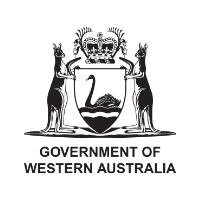About The Issue

What do we mean by violence against women?
Put simply, and using an internationally recognised definition, violence against women is any act of gender based violence that causes or could cause physical, sexual or psychological harm or suffering to women, including threats of harm or coercion, in public or in private life.
As this definition makes clear, violence against women is not only or always physical. It includes psychological, economic, emotional and sexual violence and abuse, and a wide range of controlling, coercive and intimidating behaviours.
In Australia, violence against women is called many different things, including domestic violence, family violence, intimate partner violence, sexual harassment and sexual assault.
Here are some definitions of different kinds of violence, which demonstrate the different forms that violence against women can take...
Domestic violence
Domestic violence – refers to acts of violence that occur in domestic settings between two people who are, or were, in an intimate relationship. It includes physical, sexual, emotional, psychological and financial abuse.
Emotional/psychological violence
Emotional/psychological violence – can include a range of controlling behaviours such as control of finances, isolation from family and friends, continual humiliation, threats against children or being threatened with injury or death.
Family violence
Family violence – is a broader term than domestic violence, as it refers not only to violence between intimate partners but also to violence between family members.
This includes, for example, elder abuse and adolescent violence against parents. Family violence includes violent or threatening behaviour, or any other form of behaviour that coerces or controls a family member or causes that family member to be fearful.
In Indigenous communities, family violence is often the preferred term as it encapsulates the broader issue of violence within extended families, kinship networks and community relationships, as well as intergenerational issues.
Gender based violence
Gender based violence – violence that is specifically 'directed against a woman because she is a woman or that affects women disproportionately'.
Intimate partner violence
Intimate partner violence – any behaviour by a man or a woman within an intimate relationship (including current or past marriages, domestic partnerships, familial relations, or people who share accommodation) that causes physical, sexual or psychological harm to those in the relationship.
This is the most common form of violence against women.
Non-partner sexual assault
Non-partner sexual assault – sexual violence perpetrated by people such as strangers, acquaintances, friends, colleagues, peers, teachers, neighbours and family members.
These definitions are taken from Change the Story: A shared framework for the primary prevention of violence against women and their children in Australia.
You can find the full glossary of terms on page 61-62.
The impact of violence against women
Violence against women and their children takes a profound and long-term toll on women and children's health and wellbeing, on families and communities, and on society as a whole.
Intimate partner violence is the greatest health risk factor for women aged 25-44 [Ref 1]
Domestic or family violence against women is the single largest driver of homelessness for women [Ref 2], a common factor in child protection notifications [Ref 3], and results in a police call-out on average once every two minutes across the country [Ref 4].
The combined health, administration and social welfare costs of violence against women have been estimated to be $21.7 billion a year, with projections suggesting that if no further action is taken to prevent violence against women, costs will accumulate to $323.4 billion over a thirty year period from 2014-15 to 2044-45 [Ref 5].
Children and young people are also affected by violence against women. Exposure to violence against their mothers or other caregivers causes profound harm to children, with potential impacts on attitudes to relationships and violence, as well as behavioural, cognitive and emotional functioning, social development, and – through a process of 'negative chain effects' – education and later employment prospects [Ref 6].
Above all, violence against women is a fundamental violation of human rights, and one that Australia has an obligation to prevent under international law [Ref 7].
What about violence against men?
All violence is wrong, regardless of the sex of the victim or perpetrator. But there are distinct gendered patterns in the perpetration and impact of violence.
For example, both women and men are more likely to experience violence at the hands of men, with around 95% of all victims of violence in Australia reporting a male perpetrator [Ref 8].
While men are more likely to experience violence by other men in public places, women are more likely to experience violence from men they know, often in the home [Ref 9].
The overwhelming majority of acts of domestic violence and sexual assault are perpetrated by men against women, and this violence is likely to have more severe impacts on female than male victims [Ref 10].
Recognising the gendered patterns of violence doesn't negate the experiences of male victims. But it does point to the need for an approach that looks honestly at what the research is telling us, and addresses the gendered dynamics of violence – this is what Our Watch seeks to do.
Our specific mandate is to prevent violence against women and their children, but promoting gender equality and respectful and non-violent relationships benefits the whole community, including men.
References
- AIHW 2018. Family, domestic and sexual violence in Australia 2018. Cat. no FDV 2. Canberra: AIHW.
- AIHW 2017. Specialist homelessness services annual report 2016-17. Cat. no. WEB 217. Canberra: AIHW. Overall, 40% of clients seeking Specialist Homelessness Services were experiencing domestic and family violence, with 91% of these being female.
- AIHW 2018. Child Protection Australia 2016-2017. Cat. no. CWS 63. Canberra: AIHW. Children exposed to family violence are classified as experiencing 'emotional abuse', which while a broader category, is the most commonly substantiated type of harm (46%) in child protection notifications across Australia.
- Police across Australia deal with over 264,000 domestic violence matters each year (or one every two minutes) – calculated for police data sourced across all states and territories, collated at ABC News.
- PricewaterhouseCoopers Australia (PwC) 2015. A high price to pay: The economic case for preventing violence against women.
- Frederick, J. and Goddard, C. (2007) Exploring the relationship between poverty, childhood adversity and child abuse from the perspective of adulthood, Child Abuse Review, 16, pp. 323–341; and Humphreys, C. and Houghton, C. (2008) The research evidence on children and young people experiencing domestic abuse, in Humphreys, C., Houghton, C. and Ellis, J., Literature review: Better outcomes for children and young people affected by domestic abuse – Directions for good practice, Scottish Government, Edinburgh. Several jurisdictions now recognise this harm as a form of family violence in and of itself.
- United Nations 2017. Sustainable Development Goals. The elimination of violence against women is a specific target (Target 5.2) of the United Nations Sustainable Development Goals.
- Diemer, K. 2015. ABS Personal Safety Survey: Additional analysis on relationship and sex of perpetrator. Documents and working papers. Research on violence against women and children, University of Melbourne.
- ABS 2017. Personal Safety, Australia, 2016, ABS cat. no. 4906.0. Canberra: ABS.
- Diemer, K. 2015. ABS Personal Safety Survey: Additional analysis on relationship and sex of perpetrator. Documents and working papers. Research on violence against women and children, University of Melbourne.

National Rugby League respects and honours the Traditional Custodians of the land and pay our respects to their Elders past, present and future. We acknowledge the stories, traditions and living cultures of Aboriginal and Torres Strait Islander peoples on the lands we meet, gather and play on.



